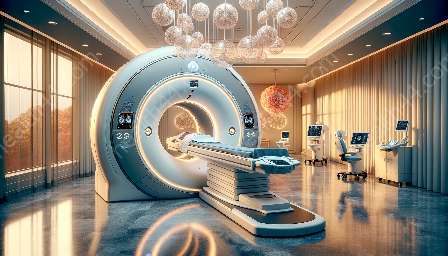Ultrasound machines have revolutionized medical imaging, offering a non-invasive and cost-effective way to visualize the human body's internal structures. Commonly used in various medical specialties, these devices play a crucial role in diagnosing and monitoring a wide range of conditions. In this comprehensive guide, we will delve into the world of ultrasound machines, exploring their technology, applications, and impact on healthcare.
Understanding Ultrasound Technology
Ultrasound, also known as sonography, uses high-frequency sound waves to create real-time images of the body's internal organs and tissues. The machine transmits these sound waves into the body, where they bounce off different structures and return to the transducer, creating a visual representation on a monitor. Unlike X-rays or CT scans, ultrasounds do not use ionizing radiation, making them safe for patients and healthcare professionals.
Modern ultrasound machines are equipped with advanced features such as Doppler imaging, 3D/4D imaging, and elastography, allowing for detailed visualization and analysis of various anatomical structures. These technological advancements have significantly enhanced the diagnostic capabilities of ultrasound, making it an indispensable tool in modern medicine.
Applications in Medical Imaging Devices
Ultrasound machines are widely used across different medical specialties, including obstetrics, gynecology, cardiology, radiology, and more. In obstetrics, ultrasound plays a crucial role in monitoring fetal development, detecting abnormalities, and guiding prenatal interventions. Gynecologists rely on ultrasound to evaluate the reproductive system, diagnose conditions such as ovarian cysts and fibroids, and assist in minimally invasive procedures.
Cardiologists utilize ultrasound machines for echocardiography, allowing for detailed assessment of the heart's structure and function. This non-invasive imaging technique provides valuable insights into cardiac anatomy, blood flow, and abnormalities such as heart valve disorders and congenital heart defects. Radiologists use ultrasound for a wide range of diagnostic purposes, including evaluating abdominal organs, detecting tumors, and guiding interventional procedures such as biopsies and drain placements.
Advancements in Medical Devices & Equipment
The integration of ultrasound technology into medical devices and equipment has led to significant advancements in the field of healthcare. Portable and handheld ultrasound devices have become increasingly popular, allowing healthcare providers to perform imaging studies at the point of care. These compact and versatile devices are particularly valuable in emergency medicine, critical care, and remote healthcare settings, enabling rapid assessment and decision-making.
Furthermore, the development of ultrasound-guided therapies and interventions has expanded the scope of minimally invasive procedures. From tumor ablations to nerve blocks, ultrasound imaging provides precise visualization and real-time guidance, improving the accuracy and safety of therapeutic interventions. These advancements have transformed the way many medical conditions are managed, reducing the need for traditional surgical approaches and minimizing patient discomfort.
Impact on Healthcare
The widespread availability and versatility of ultrasound machines have had a profound impact on healthcare delivery and patient outcomes. By offering a non-invasive and radiation-free imaging modality, ultrasounds have become a preferred choice for diagnostic evaluations, especially in sensitive patient populations such as pregnant women and children. This has contributed to the overall reduction in unnecessary radiation exposure and healthcare costs.
Moreover, the portability of modern ultrasound devices has facilitated access to imaging services in underserved communities and resource-limited settings, improving the reach of healthcare services and enabling timely diagnoses. The use of ultrasound for point-of-care diagnostics has also streamlined clinical workflows, allowing for prompt decision-making and targeted interventions, ultimately enhancing patient care and treatment outcomes.
Future Innovations and Trends
The future of ultrasound machines holds promising possibilities, with ongoing research and development aimed at further enhancing imaging capabilities, improving image quality, and expanding clinical applications. Advancements in artificial intelligence and machine learning are being integrated into ultrasound systems, enabling automated image analysis, identification of pathology, and decision support for clinicians.
Additionally, the fusion of ultrasound with other imaging modalities, such as MRI and CT, is being explored to create hybrid imaging platforms that offer comprehensive diagnostic solutions. These synergistic approaches have the potential to revolutionize disease diagnosis and treatment planning, paving the way for personalized and precision medicine.
Conclusion
Ultrasound machines stand at the forefront of medical imaging devices and medical devices & equipment, driving innovation and transforming healthcare practices. Their non-invasive nature, versatility, and expanding clinical utility make them indispensable tools for healthcare providers worldwide. As technology continues to evolve, ultrasound machines will play an increasingly significant role in shaping the future of medical diagnostics and patient care.


